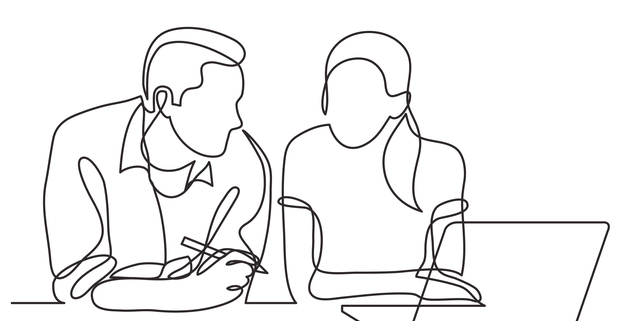Wellness at Work
This week, in recognition of Mental Health Awareness Month we’re turning back to a blog from a few years back, with fresh resources and updated insights from Mental Health America. Content Warning: this post contains a brief mention of suicide.
After the chef and storyteller Anthony Bourdain died in 2018, his mother Gladys Bourdain said in an interview with TIME Magazine that he was “absolutely the last person in the world” she would have ever dreamed would do something like this.
That something like this was suicide. But, as has become much clearer in these years since his death, Bourdain was deeply struggling with his own mental health, just as he was racking up accolades, traveling the world, making millions, doing the work he loved. Just as he seemed to have it all.
As a mother, his mother’s remarks sit heavy with me. How do you know if your loved one is in pain, if they are not showing outward signs of it? How do you know if anyone close to you—a friend, a sibling, a coworker—is dealing with mental health challenges? And are there ways to see or spot the signs that someone is struggling, perhaps for longer than we may have realized?
As an employer, these questions sit equally heavy with me. What role do I have as a responsible employer to consider the effects of the workplace on our team’s mental health. And what can we do to be more proactive about creating spaces that support the mental wellbeing of all team members?
For many of us, a large portion of our days is spent at work; The average person will spend 90,000 hours at work over a lifetime—a conservative view for many overworked Americans—so it’s safe to say that our jobs can make a huge impact on our quality of life.
If you think mental health isn’t an issue where you live, learn, work, or serve, think again. According to the National Institute of Mental Health, 43.8 million adults experience mental illness in a given year. While stress and distraction levels are lower in the healthiest of workplaces, rates of stress and distraction remain high across all workplaces. Eighty percent of employees agree that the stress from work affects their relationships with friends, family, and coworkers. Seventy-one percent of employees find it difficult to concentrate at work, compared to 65% in 2021 and 46% in 2018.
My dear friend Schroeder Stribling, who recently took the helm as CEO of Mental Health America shares this wisdom in the latest Mind the Workplace report:
“While in the past many companies and employees may have thought of mental health conditions as something that developed outside the workplace, these past two years of the COVID-19 pandemic have made it overtly clear that our workplaces directly affect our health in every way – from the risk of spreading infection to the potential for anxiety or depression. The experiences we have each day at work – our relationships with co-workers and managers, our access to quality and confidential support as needed, and the values and policies that guide our efforts, have a direct effect – positive or negative – on our overall sense of wellbeing.”
What I’ve learned through Mental Health America, and through the process of becoming a Gold Bell Seal Certified workplace is that there is so much that the workplace can do to contribute to the mental health and wellbeing of its workforce.
So much, in fact, that is right at our fingertips, that is free and publicly available: from mental health awareness tools, to conversation guides, wellness surveys and tests that can help you gauge the mental wellbeing of your own community, and then support your community accordingly.
In honor of Mental Health Awareness Month, join Mission Partners in taking one or more of these actions before the end of the month, for your own wellbeing and the wellbeing of the people and communities you love. We all have a part in contributing to mental wellbeing, and in further normalizing that mental health is health.
1. If you’re an employer, consider outlining a mental health strategy for your workplace, beyond basic benefits and compliance. The Employer Assistance and Resource Network on Disability Inclusion (EARN) provides a toolkit to help employers create an initial framework for a mental health strategy built around the “4 A’s”: Awareness, Accommodations, Assistance, and Access.
2. Read the latest Mind the Workplace report from Mental Health America, which offers a clear and detailed picture for the state of wellbeing in the workplace, including concrete steps employers can take to better support their employees’ mental health.
3. Explore, share, and take the Mental Health America free screening test. Online screening is one of the quickest and easiest ways to determine whether you are experiencing symptoms of a mental health condition. The test is free, confidential and will direct you to resources that can support your own wellbeing.
4. And, check out this Tips for Talking resource, which includes a very useful frame for writing a letter about how you’re feeling as a way to start a conversation about your mental health when you’re just not sure how.
Mental health conditions, such as depression or anxiety, are real, common and treatable. Recovery is possible, and support is closer than you think.
If you are thinking about suicide, please call the National Suicide Prevention Lifeline at 800-273-TALK (8255).





 Check out our new
Check out our new